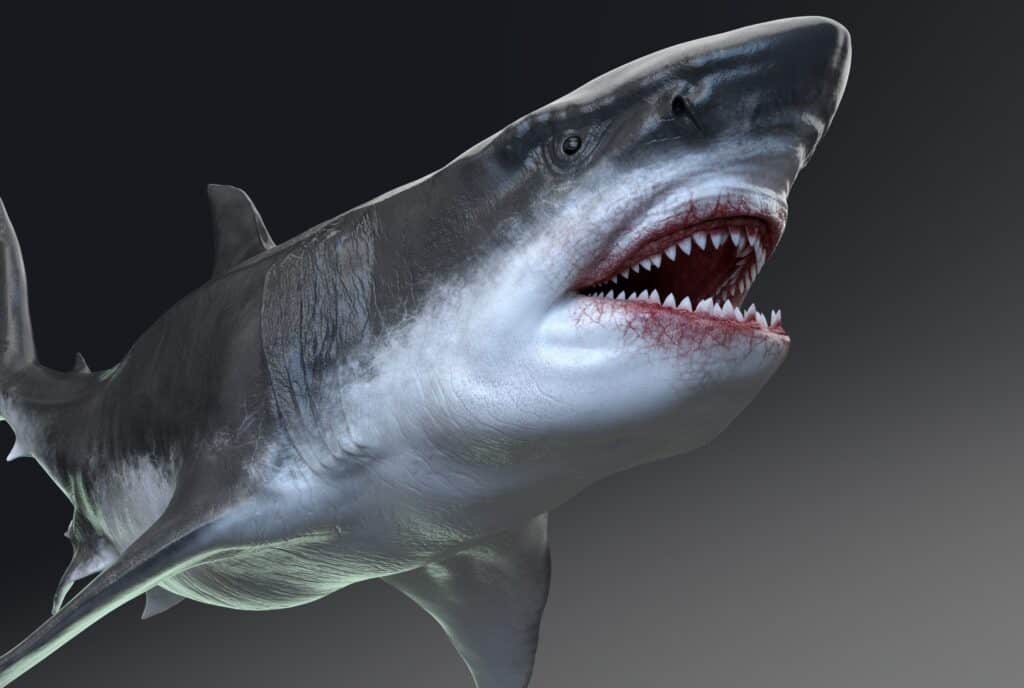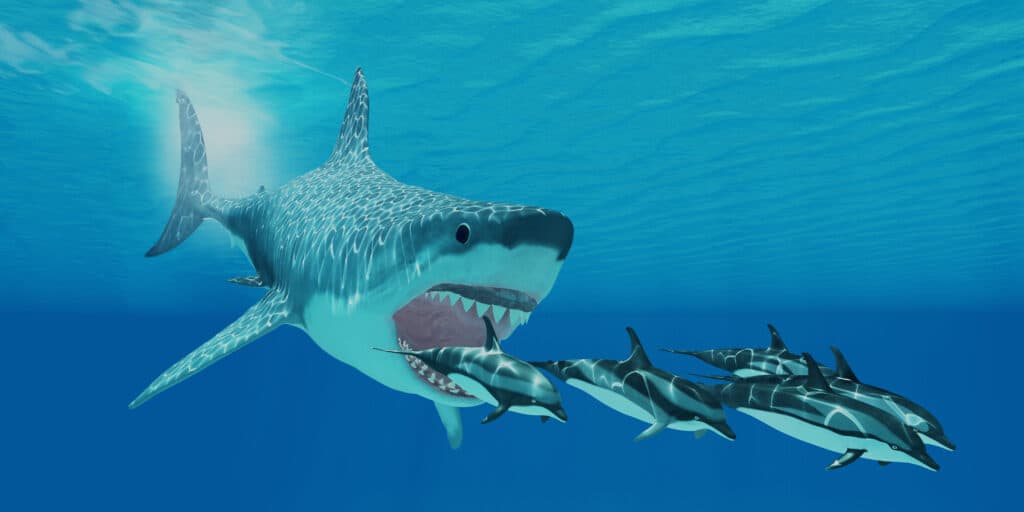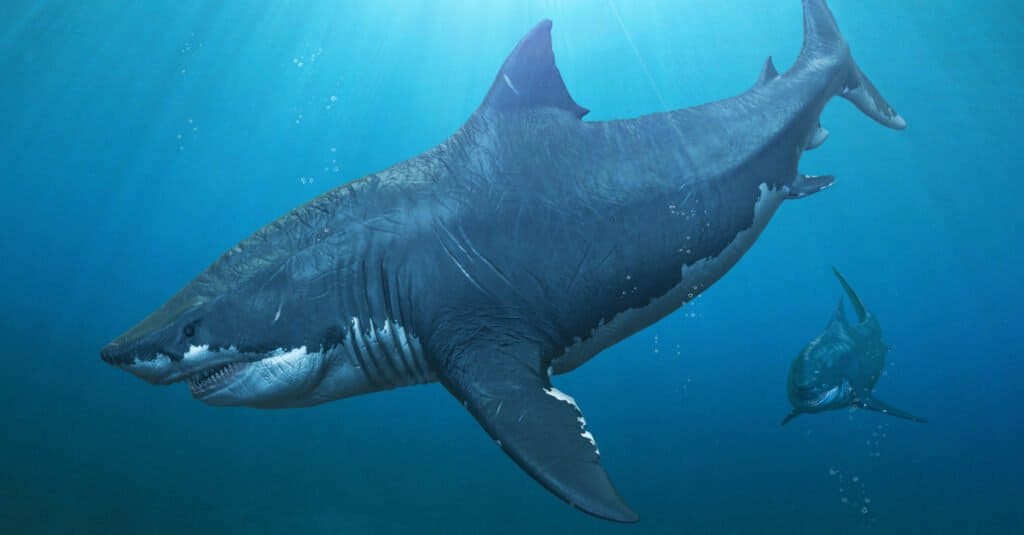Although there are some pretty scary predators in the world, our modern wilderness pales in comparison to how dangerous things used to be. Reptiles the size of buildings and predatory sea creatures larger than whales were commonplace. Thankfully, humans weren’t around during those ancient times and didn’t have to experience what it must have been like.
Still, we do have access to the fossil record and can get a small glimpse into the world of these super-predators. Today, we will discover an ancient creature that could eat a great white shark in a single bite. Curious? Let’s get started!
What ancient creature could eat a great white in a single bite?

racksuz/Shutterstock.com
The now-famous Otodus megalodon, commonly known as the megalodon shark, is one of the largest predators to have ever existed. Although we don’t know everything about these animals, we do know enough to be happy that they are extinct! In some recent studies, new information has come out showing us just how large these fish were. In fact, the new model explains the size of prey these sharks ate; the results are pretty shocking. Before we dive into the details of the new study, let’s get to know megalodon to understand the scale of this extinct shark.
Just how big was Megalodon?

A-Z-Animals.com
Megalodon is probably the largest ocean-based predator to have ever lived. In fact, it’s possible that the only animal to ever grow larger than megalodon is the blue whale (the largest creature to have ever lived). There is some flexibility to the estimated size of megalodon since we only have partial fossil remains, but their maximum length was likely around 66-67 feet. In regards to weight, they were potentially between 105,733 lbs-227,510 lbs. With those measurements, the megalodon was the second largest sea creature, larger than the Livyatan, Mosasaurus (from Jurassic World), and the great white shark.
When did Megalodon live?
Thankfully, this massive whale-eating predator isn’t around today (despite what some conspiracies claim). The temporal range that megalodon lived between was the Easly Miocene through the Pliocene epochs. This range was around 23 million years ago, all the way to 3.6 million years ago.
Despite the megalodon being the apex predator for its entire existence, other factors likely influenced its extinction. Many scientists believe that cooling waters during the onset of the ice ages, plus the lowering sea levels around prime nursery sites, likely had a major impact on the shark’s decline. Additionally, baleen whales, one of the shark’s primary food sources, began to evolve for colder waters where megalodon couldn’t follow. All of these factors led to the gradual extinction of the ocean’s greatest predator.
Was Megalodon the predator that it’s been cracked up to be?

Catmando/Shutterstock.com
Part of the reason for an increase in conversation around megalodon is a recent scientific model that confirmed an important piece of the shark’s diet.
In recent years, the exact diet of the megalodon has been contested as some researchers began to question the diet of the super-shark. In these challenges, scientists argued that megalodon mostly preferred smaller prey like dolphins and seals, not the large whales that we had originally thought. This article highlights one of those arguments at an academic level.
But it has recently been argued that it may not have been quite the super-predator it had been cracked up to be, concluding that it concentrated on lesser prey such as seals, dolphins and small whales between around two and seven metres in length. If correct, this would have major implications for our understanding of how the marine ecosystems of the time functioned.
The Conversation
Using a new model, however, the questions around megalodon’s place on the food chain were finally put to rest. The answer? Megalodon was, in fact, a super-predator that primarily fed on massive whales quite regularly.
This new model revealed some important measurements. Namely, it confirmed the size of the shark’s body, its mouth size, and its stomach size. The model went on to explain that the largest sharks likely grew to 65 feet, had a maximum gape (mouth size) of 6 feet, and a stomach capacity of nearly 50 square feet.
What does this mean? The megalodon could have swallowed a great white shark whole. Even more, it could swallow a T-Rex in three bites and a killer whale in five bites.
How much food did Megalodon need?

Herschel Hoffmeyer/Shutterstock.com
Using this new data model, scientists were also able to estimate how much the megalodon needed to eat at one time. Their research revealed the following:
Results from our analysis of energetics suggest that having eaten a big killer whale for breakfast, this megalodon could have travelled around 7,000km before needing to feed again.
The Conversation
With their model, they also estimated that megalodon could distance swim at around 5 kph, or 3.1 mph. This would make it faster than most other fish (over long distances), allowing it to traverse massive distances after each meal in search of the next one.
In short, the data shows that megalodon was exactly the top predator that the media makes it out to be!
The post Discover the Ancient Creature That Could Eat a Great White Shark in 1 Bite (and a T-Rex in 3 Bites!) appeared first on AZ Animals.
from Animal News, Facts, Rankings, and More! - AZ Animals https://ift.tt/vg0jol7